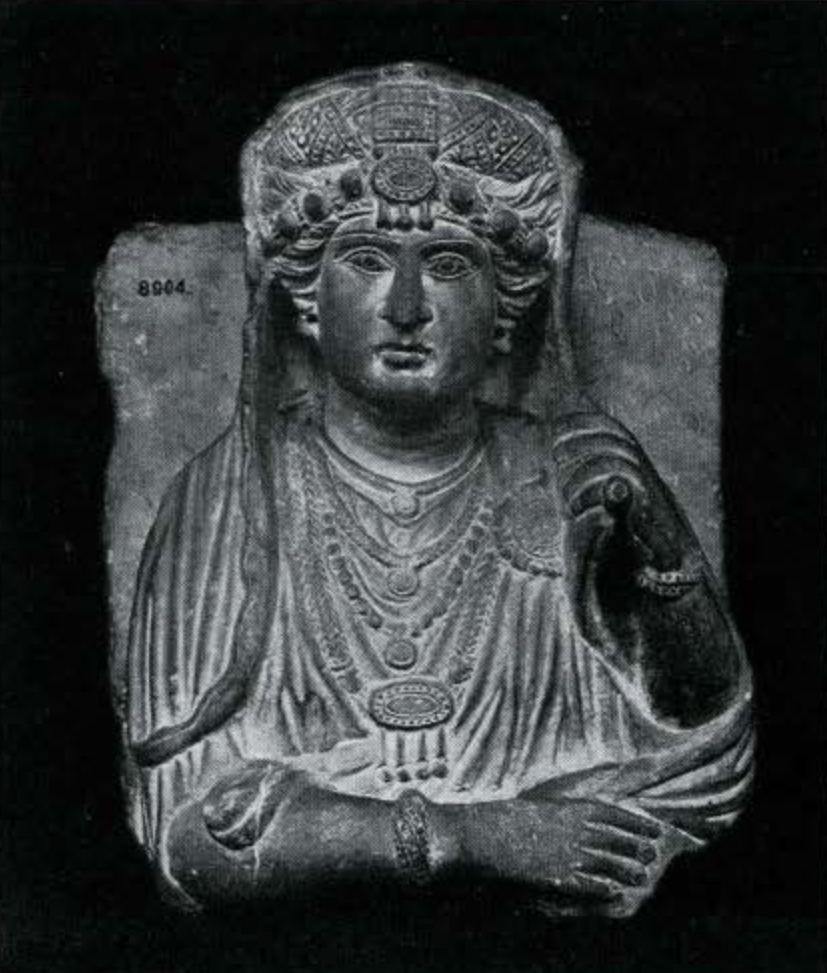
Museum Object Number: B8904
Image Number: 8041
Small collections of antiquities from countries bordering on Mesopotamia have been acquired by purchase by the University Museum and are precious additions to the Babylonian Section. They are the Palmyra bust reliefs, the Luristan bronzes, and the Sabaean collection of sculptures and inscriptions from South Arabia.
Palmyra (Tadmor) is the oasis in the desert halfway between Dêr-ez-Zor on the Euphrates, and the Syrian coast, or Damascus in the south. The busts (Figure 48) and other funeral monuments, now in the University Museum, were acquired in 1890 by Dr. John P. Peters, on his return journey from Nippur. All are cut in the local limestone and once decorated the monuments or underground vaults of the noble ladies and the rich merchants living at Palmyra in the second and third centuries A.D., in the days of Queen Zenobia, who, for a while, balanced in the Near East the fortune of Rome. (cf. Museum Journal, December 1927.)

